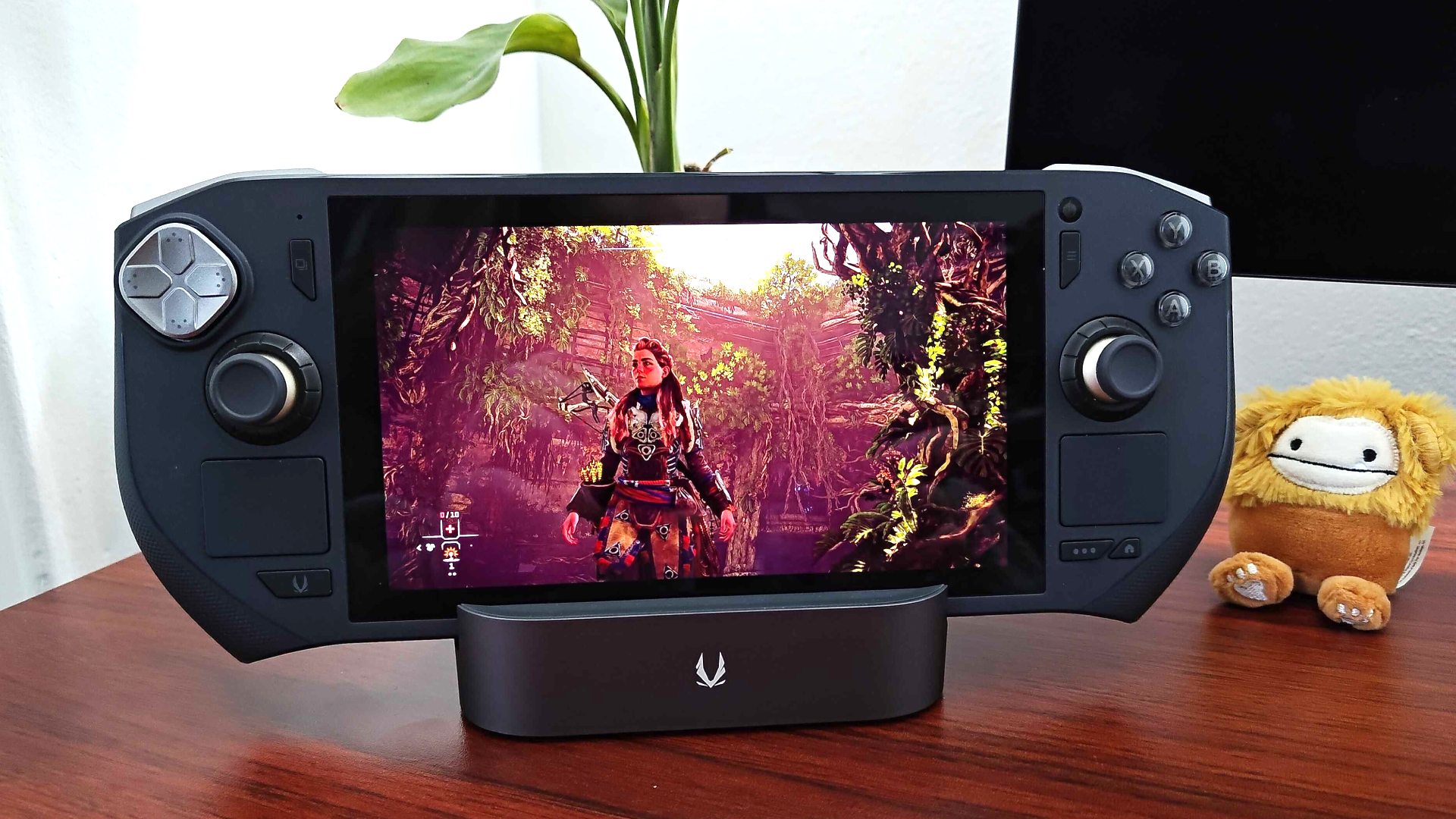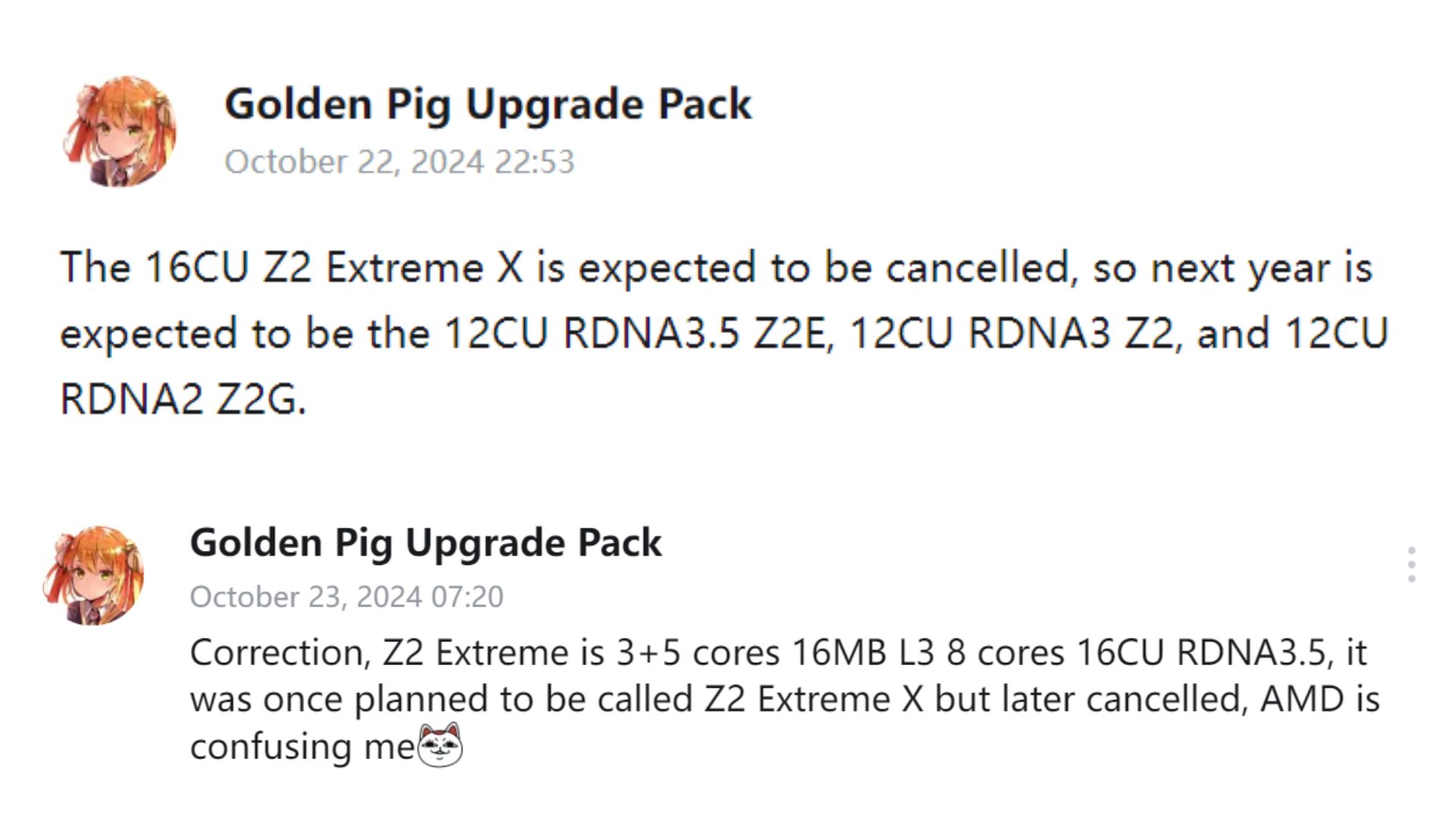The AMD chip that could power next gen handhelds just leaked, but rumored specs keep shifting
AMD Ryzen Z2 Extreme specs have surfaced.

AMD is seemingly cooking up a new collection of APUs for the best gaming handhelds. That should come as zero surprise considering the growing popularity of portable PCs like the Steam Deck, but I'm not convinced the chipmaker has made up its mind on specs yet. The reason? Leaks revealing core counts for the Ryzen Z2 Extreme have already been amended just hours after their initial arrival.
Yesterday, AMD Ryzen Z2 Extreme specs leaked courtesy of Bilibili user Golden Pig, claiming that the RDNA 3.5 chip would arm future handheld contenders with 12 Compute Units (via Videocardz). The leaker also revealed that there was originally a 16 CU version in the worked dubbed the Ryzen Z2E X, but it was supposedly cancelled.
I say supposedly, as less than 24 hours later, the leaker chimed back in to say that the vanilla Z2E will wield 16 CUs. The insider rounds off the latest update with "AMD are confusing me," which is something I can completely relate to when it comes to early CPU and GPU specs. It's not uncommon for both AMD and Nvidia to change its mind right up until the last minute, and it feels like that's what's going on here.

What is the AMD Ryzen Z2 Extreme?
If you're unfamiliar with the world of mobile chipsets, you might be wondering what the AMD Ryzen Z2 Extreme is or why the handheld nerd within you should care. Effectively, it's poised to be a successor to the chip within handhelds like the Asus ROG Ally and Lenovo Legion Go, offering up improved performance via a new RDNA 3.5 architecture. Simply put, it'll boost fps further than the current Ryzen Z1 Extreme thanks to a higher core count and enhanced specs.
| APU | AMD Ryzen Z1 Extreme | AMD Ryzen Z2 Extreme (rumored) |
|---|---|---|
| Compute Units (CU) | 8 RDNA 3 | 16 RDNA 3.5 |
| Cores | 8 Zen 4 | 3 Zen5 +5 Zen5c |
| L3 cache | 16 MB | 16 MB |
In addition to the "Extreme" version, AMD is apparently set to release two additional chips, namely the Z2 and Z2G. Both should serve as lower spec options that aren't too dissimilar to the current gen Z1E, equipped with 8 Compute Units. In turn, manufacturers will theoretically be able to produce cheaper handheld models that can keep up with the top portable PCs available right now.
It's worth noting that while Valve may end up using a chip similar to either of the above for a hypothetical Steam Deck 2, you'll more likely find it in successive Windows handhelds. Options like the Steam Deck OLED do use Ryzen chips, but they've been armed with custom versions up until now. What I'm getting at is you shouldn't get excited about a new Deck coming as a result of this latest leak, and it's more likely a sign that Lenovo's Legion Go refresh is inbound.
Talk of specs aside, it's a pretty exciting time to be a handheld fan. While the current Ryzen Z1 chip pushed the boundaries of portable performance last year, newcomers like the Zotac Zone have only slightly nudged the bar with chips like the 7 8840U. If a new version of the APU arrives with double the Compute Units, we could be looking at a wave of devices that can comfortably run the latest PC games at over 60fps without much compromise. Plus, it's lower-spec siblings may guzzle less power, ultimately solving the big battery dilemma tied to handheld gaming in 2024.
Weekly digests, tales from the communities you love, and more
Looking to grab some handheld discounts? Swing by Black Friday Steam Deck deals and Black Friday Nintendo Switch deals. Alternatively, check out Black Friday monitor deals if you need a new desktop screen.

Phil is currently the Hardware Editor at GamesRadar+ who specialises in retro gaming, the best gaming handhelds like the Steam Deck, and more modern components like graphics cards. Having spent years offering up classic console advice and over a decade as a gaming journalist for big names like TechRadar, The Daily Star, the BBC, Den of Geek, and many more, Phil now dedicates their days to covering the latest news and offering up invaluable setup advice.


